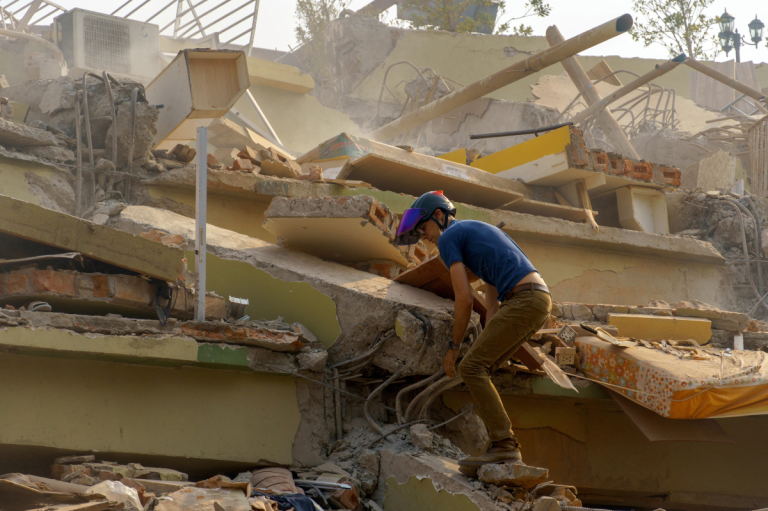Myanmar Earthquake Amplifies Misinformation Crisis on Social Media
The devastating earthquake that struck Myanmar in March 2025, claiming thousands of lives and leaving a trail of destruction, has become the latest breeding ground for a surge of misinformation on social media platforms. While the nation grappled with the aftermath of the disaster, a wave of fabricated videos, manipulated images, and false narratives flooded newsfeeds, preying on the heightened anxieties and desperate search for information in the crisis’s wake. This exploitation of tragedy not only exacerbates the suffering of those affected but also highlights the alarming ease with which misinformation spreads and the financial incentives driving this digital deception.
Digital activists and researchers have documented a disturbing trend of profiteers capitalizing on the disaster. Fake videos purporting to show the earthquake’s devastation, often sourced from unrelated events or even generated by artificial intelligence, quickly went viral. These posts, designed to attract maximum views and engagement, generate significant advertising revenue for both the creators and the social media platforms hosting them. This lucrative ecosystem incentivizes the creation and dissemination of clickbait content, irrespective of its veracity, turning human tragedy into a source of profit.
The proliferation of misinformation during crises poses a significant threat to effective disaster response and recovery efforts. Jeanette Elsworth, head of communications at the UN Office for Disaster Risk Reduction (UNDRR), emphasizes the dangers, stating that misinformation “can escalate panic, delay evacuations, undermine trust in emergency services, and distract from crucial information.” The chaotic environment following a disaster creates a fertile ground for false narratives to take root, hindering aid delivery, exacerbating emotional distress, and obstructing access to accurate, life-saving information.
This isn’t an isolated incident. The spread of misinformation has become a recurring pattern following major disasters and conflicts. From Hurricane Helene in the United States to the devastating earthquake in Turkey and Syria in 2023, social media has been inundated with recycled footage, false claims, and fabricated stories. This recurring phenomenon reveals systemic vulnerabilities in the digital information landscape, characterized by inadequate regulatory oversight, insufficient platform accountability, and a pervasive culture of prioritizing engagement over accuracy.
The financial incentives driving the misinformation ecosystem are substantial. According to tech policy group What To Fix, over $20 billion was generated in 2024 through advertising revenue sharing between social media platforms and content creators. This revenue model directly rewards virality, regardless of content accuracy. Creators are incentivized to produce sensational and emotionally charged content, even if fabricated, to maximize views and shares, which translate into higher ad revenue. Estimates suggest that fraudsters have earned tens of thousands of dollars by exploiting previous crises, highlighting the significant financial gains to be made from peddling misinformation.
Experts point to several contributing factors exacerbating the misinformation crisis. The limited flow of official information from Myanmar, due to internet shutdowns and restricted access, creates an information vacuum that is readily filled by fabricated narratives. This information scarcity leaves vulnerable populations, both within and outside Myanmar, desperately seeking updates, making them particularly susceptible to misinformation. Furthermore, the architecture of social media algorithms, designed to amplify engaging content, often elevates sensationalized and emotionally charged posts, regardless of their factual basis, giving misinformation a disproportionate reach and influence. The absence of robust fact-checking mechanisms and the slow response of social media platforms in removing false content further contribute to the problem. While platforms claim to be working to address the issue, critics argue their efforts are insufficient and reactive, relying heavily on community reporting rather than proactive prevention. This reactive approach places the burden of identifying and flagging misinformation on already overwhelmed civil society organizations and individuals. Addressing this complex challenge requires a multi-pronged approach involving stronger platform accountability, improved media literacy, greater investment in fact-checking initiatives, and international cooperation to combat the spread of misinformation. The Myanmar earthquake serves as a stark reminder of the urgent need for collective action to protect the integrity of information during times of crisis and safeguard vulnerable populations from the harmful consequences of digital deception.


